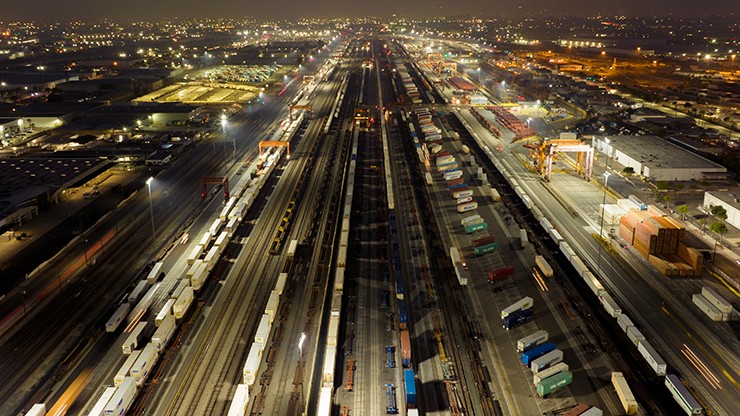What You Should Know About Intermodal Transportation

Is intermodal transportation right for my business?
This is a question we regularly hear business leaders and supply chain managers asking themselves. They often have concerns about service-sensitive freight or believe that intermodal can’t meet their business’s specific needs. The truth is that transportation via J.B. Hunt intermodal is a lot different today than it was even just a few years ago. This is largely due to strategic capacity, infrastructure and technology investments that have greatly improved our service.
Keep reading to discover everything you need to know about shipping with J.B. Hunt Intermodal.
What is Intermodal Freight Shipping?
Intermodal transportation is the movement of freight by two or more modes of transportation, usually including rail and over-the-road trucking. J.B. Hunt helped pioneer this service in 1989 with the help of Santa Fe Railroad (now BNSF railway). In the 35 years since, we have become a leader in intermodal transportation and operate North America’s largest fleet of company-owned containers.
The goal of intermodal transportation is to move freight across long distances using the most efficient method possible. Because of this, the average intermodal shipment produces around 65% less carbon emissions than over-the-road shipments. Here’s how a typical intermodal shipment works:
- Containers arrive via truckload at an intermodal hub and are double stacked onto a train
- The train moves the freight from the origin hub to the destination hub where a crane moves the container from the train onto a chassis
- The container, now ready for over-the-road transportation, is coupled with a tractor and moves through the process of being delivered to its destination
Why Choose J.B. Hunt Intermodal?
The success of your intermodal operations depends on a provider’s ability to understand your future needs and exceed your expectations. Here are a few factors that set J.B. Hunt apart from the competition:
1. We have the best people in the business.
Our teams are highly experienced at driving value for customers, which is why we were ranked number 1 in service by the 2024 Journal of Commerce intermodal survey.
2. We own the most assets.
If you experience regular surges in demand, an asset-based provider can often accommodate more flexibility and priority service for customers.
3. We are mode neutral.
Having a mode-neutral approach means we will find the best solution for your freight rather than prioritizing only one mode of transportation. This can be invaluable for saving money and increasing efficiency.
4. We invest in technology.
Our groundbreaking Shipper 360® technology keeps your business moving quicker with better visibility.
5. We can handle service-sensitive freight.
From priority services such as Quantum: A J.B. Hunt and BNSF Service™, to temperature-controlled containers, we have the specialized capabilities your business needs.
.png)
.png)
"J.B. Hunt has spent 35 years perfecting its intermodal segment, always looking for ways to improve. And because of this constant cycle of growth and progress, J.B. Hunt Intermodal has become an industry standard that others strive to achieve."
-Astrid, Director II, Operations
Creating Custom Intermodal Solutions
Intermodal is not a one-size-fits-all solution. J.B. Hunt has made a variety of strategic investments to ensure our intermodal offering is fully customizable for each customer. If you’re shipping across the border, you can reduce transit times and increase visibility by utilizing our transloading and global forwarding services. We also have a dedicated Mexico service that provides additional support, including a dedicated bilingual team and advanced security protocols. Depending on market conditions and changing seasons, we can quickly convert your freight back to over-the-road or to a temperature-controlled container. This added flexibility can keep your freight moving efficiently while maintaining lower costs.
Our intermodal team has spent decades establishing strong relationships with rail providers, making it easier for us to mitigate disruptions and provide excellent service. In 2023, we launched Quantum, a priority service that provides the consistency, agility and speed that was previously only available over-the-road. This has made J.B. Hunt Intermodal a strong alternative for shippers with service-sensitive freight.
Getting Started with Intermodal
When you choose J.B. Hunt Intermodal, you will work with a team that is Driven for You™. We consistently strive to provide a service that helps you deliver exceptional results for your business. As part of our Customer Value Delivery® methodology, we will proactively solve problems and anticipate future needs to protect and enhance your operations. Our goal is to create maximum value for your business throughout each phase of the supply chain.
If you think intermodal shipping could be right for your business, let’s get connected.

